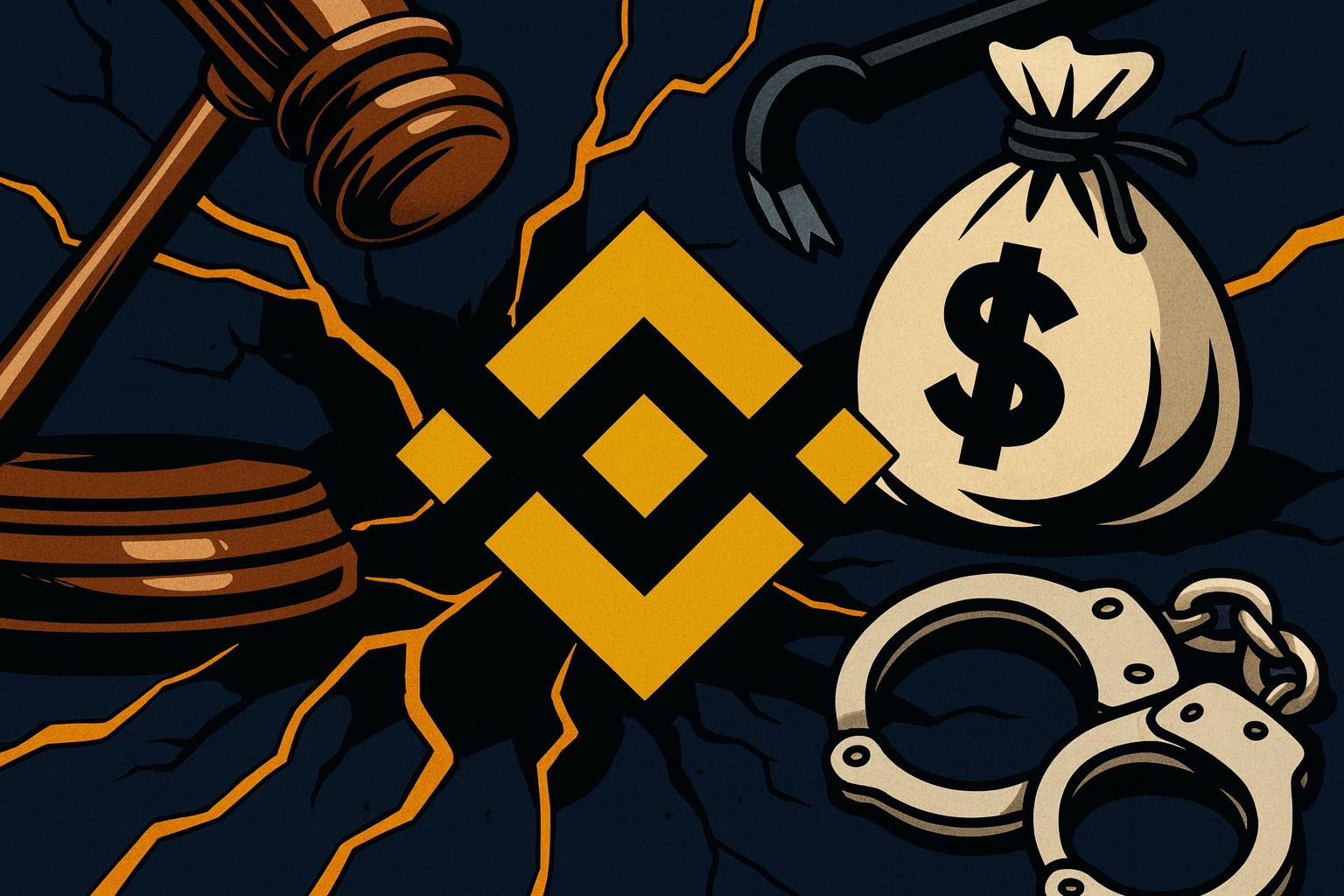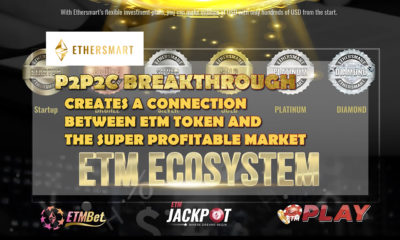Recent Updates
Only four addresses in the world have more than 100 thousand bitcoins

One hundred thousand Bitcoins are held in only four Bitcoin addresses, totaling 664,320 bitcoins.
Changpeng “CZ” Zhao is a well-known player in the cryptocurrency business, having sold a flat for a considerable amount of bitcoins valued at more than $200 million, making him a possible whale.
Satoshi Nakamoto, the creator of Bitcoin, has around 1 million bitcoins spread over several addresses and commonly are referred to as the market’s “whales.”
MicroStrategy, the famed Michael Saylor’s organization, currently owns over 125,000 bitcoins and intends to continue purchasing them in 2022.
Only four addresses in the world have more than 100 thousand bitcoins
According to the BitInforCharts website, only four addresses in the world have more than 100,000 bitcoins, together totaling 664,320 bitcoins.
Three of the addresses are cryptocurrency brokers, i.e., centralized companies that offer platforms for buying and selling digital assets.
Among the brokers is Binance, with two addresses that hold 369,198 bitcoins, valued at $15.3 billion at the current exchange rate. On the other hand, the broker Bitfinex has 168,010 bitcoins, and lastly, an unidentified address holds 127,112 bitcoins.
Although Bitfinex was founded five years before Binance, now the world’s largest, the company remains third on the list. Binance’s CEO started accumulating bitcoins long before he opened the company.
Changpeng “CZ” Zhao is one of the most famous names within the crypto market. The founder of Binance is a celebrity in the industry and a billionaire cryptocurrency millionaire.
According to Bitcoin Magazine, Zhao sold an apartment in 2014 for many bitcoins, which would be worth more than $200 million today.
Binance’s CEO clarified the initial article, claiming that because it was only a modest flat, he received “only” 1,500 bitcoins. He further stated that of that amount, he has spent (not sold) about 100 BTC over the years.

It makes CZ own 1400 bitcoins with this sale alone, currently valued at about $89.7 million, an awe-inspiring amount that should make the apartment buyer regret it.
However, it is crucial to note that those who used their bitcoins to buy goods before the currency appreciated so much, whether it was an apartment or a 10,000 BTC pizza, should not be viewed as foolish or stupid by the community.
People should not fall prey to “the pizza sickness.”
People who have moved bitcoins and used the cryptocurrency as a purchase currency have helped validate Bitcoin as value and purpose. The pizza guy himself is considered a great hero by many investors.
More whales in the market
Although these addresses are identified as the “whales” of the market, it is not possible to say that they are the only holders of more than 100 bitcoins.
The creator of the world’s most revolutionary digital currency, Satoshi Nakamoto, owns about 1 million bitcoins distributed at different addresses.
For example, he mined the bitcoins in other wallets, so a single address cannot be identified as having all of them.
After the start of the big bullish cycle, in 2021, companies started to enter the market, allocating large amounts of bitcoins into equity.
The company of the iconic Michael Saylor, MicroStrategy, currently owns about 125,000 bitcoins and is still buying in 2022.
What about anonymous whales?
As seen, a single person or company can own thousands of bitcoins and not necessarily be allocated to a single wallet.
The ease of use of bitcoin allows users to control where they wish to allocate their digital currencies in a distributed manner.
Finally, the use of decentralized digital currency brings greater responsibility to users. Using the money makes you “your own bank,” such a measure requiring greater caution in directing finances.
Crypto
Do Kwon Faces 12-Year Sentence as Prosecutors Call Terra Collapse “Massive Fraud”

U.S. prosecutors are seeking a 12-year prison sentence for Terraform Labs founder Do Kwon, arguing that the collapse of Terra and Luna amounted to one of the largest frauds in crypto history. The request, filed in the Southern District of New York, highlights the scale of losses tied to TerraUSD (UST) and Luna’s algorithmic failure—an implosion that erased more than $40 billion and triggered widespread contagion across the digital asset sector.
In their filing, prosecutors said Kwon spent years misleading investors about TerraUSD’s stability, artificially inflating its perceived safety and contributing to the system’s eventual collapse. They argued that the fallout extended far beyond market volatility, calling Terra’s unraveling “a defining moment” that reshaped global regulatory scrutiny of crypto markets.
Kwon’s defense team has pushed for a significantly lighter sentence—up to five years—claiming that coordinated trading activity from third parties and broader market stress helped accelerate TerraUSD’s depeg. They cited research, including Chainalysis data, suggesting that external actors exploited structural weaknesses rather than Kwon deliberately engineering the collapse.
Kwon pleaded guilty in August to wire fraud and conspiracy charges. His criminal case stems from a March 2023 indictment that included commodities fraud, securities fraud, wire fraud and market manipulation allegations. The core of the case centers on TerraUSD, the algorithmic stablecoin designed to maintain a $1 peg through a balancing mechanism with its sister token, Luna. When that mechanism failed in May 2022, both assets collapsed rapidly, wiping out tens of billions in value and triggering insolvencies across multiple crypto firms.
Prosecutors are not seeking restitution, citing the complexity of calculating losses across global bankruptcy cases already underway. Instead, they requested forfeiture of roughly $19 million, noting that compensation efforts for victims will primarily be handled through restructuring processes tied to firms affected by Terra’s collapse.
Kwon’s legal challenges span multiple countries. After being arrested in Montenegro in March 2023 for attempting to travel on forged documents, he was extradited to the United States in December 2024 following competing requests by both the U.S. and South Korea. He also previously lost a civil case brought by the U.S. Securities and Exchange Commission, where a jury found that Terraform Labs and Kwon misled investors about TerraUSD’s mechanics and backing.
Sentencing is scheduled for December 11, marking a key moment in one of crypto’s most consequential legal sagas. While the ruling will conclude Kwon’s federal criminal case, numerous bankruptcy, civil and creditor proceedings tied to Terra’s collapse remain ongoing.
Crypto Currency
Celo Foundation and Opera Deepen Partnership to Accelerate MiniPay’s Global Stablecoin Expansion

MiniPay’s explosive growth continues as the Celo Foundation and Opera strengthen their partnership to scale real-time stablecoin payments worldwide. With more than 11 million activated wallets and Celo now leading Ethereum Layer-2 networks in daily stablecoin activity, the collaboration marks a major step toward making mobile-first digital money accessible across emerging and global markets.
MiniPay, built exclusively on Celo’s low-cost EVM chain, has surpassed 300 million transactions since launching in 2023. As adoption accelerates, Celo’s network now serves over 700,000 daily active users, including more than 3 million weekly users of USD₮, solidifying its position as a leading payments-focused blockchain. Integrations with Binance, Transak, Transfi and others have further strengthened MiniPay’s cross-market reach.
The partnership is expanding even more through early integrations with Mercado Pago in Argentina and PIX in Brazil. These features introduce direct stablecoin-to-fiat conversions, reducing the friction typically associated with off-ramping and setting the stage for broader international expansion over the coming year.
Celo Foundation President Rene Reinsberg called MiniPay “crypto’s killer use case,” emphasizing how Celo’s infrastructure enables everyday, real-world stablecoin utility. The collaboration between Opera and Celo has evolved far beyond a browser integration and is now one of the fastest-growing Web3 financial applications globally.
Looking ahead to 2026, MiniPay is preparing to roll out a number of major upgrades. One key enhancement includes deeper integration of real-world assets such as Tether Gold (XAUt0), which has already attracted nearly 30,000 users seeking inflation-resistant savings options. Plans are also underway for stablecoin-backed cards and enhanced payment tools, positioning MiniPay as a unified gateway to both traditional finance and on-chain utilities.
To support its growing ecosystem, Celo and Opera will launch a global Mini App Roadshow across Asia and South America in early 2026. This initiative aims to onboard more developers in markets with rapidly expanding Web3 adoption. Opera EVP Mobile Jørgen Arnesen highlighted that MiniPay’s mission is to offer a stablecoin wallet that works reliably “no matter where people are,” and the expanded partnership gives builders new opportunities to innovate on top of MiniPay’s infrastructure.
As Celo and Opera continue to broaden access to stablecoin payments, MiniPay is quickly emerging as a critical tool for global users seeking fast, affordable, and reliable digital finance.
Crypto
Binance Faces Renewed Legal Battle Over Alleged $80M BTC Theft

A Florida scam victim will get a second chance to pursue legal action against Binance Holdings Inc. after a state appeals court ruled that a lawsuit over the alleged theft of $80 million worth of Bitcoin can move forward. The Florida Third District Court of Appeals determined on Wednesday that a lower court improperly dismissed the case for lack of personal jurisdiction, stating the plaintiff presented a plausible argument that Binance conducts business activities connected to Florida users.
The lawsuit, originally filed in state court, claims scammers gained access to the victim’s Binance account and transferred roughly $80 million in Bitcoin off the exchange. According to the plaintiff, Binance was notified immediately and provided with transaction details but did not freeze the stolen assets in time, allowing the funds to vanish permanently. The defendant argues it has no direct operational presence in Florida, but the appeals court disagreed, reviving the case and sending it back to the trial court for further proceedings.
The decision does not determine whether Binance is liable, but it opens the door for discovery, hearings, and evidence collection. Legal analysts say the ruling could have wider implications for global crypto exchanges that serve U.S. users while attempting to avoid state-level jurisdiction.
This lawsuit adds to Binance’s broader legal challenges over the past two years, including federal scrutiny regarding compliance and operational practices. As the case progresses, the Florida court will assess whether Binance can be held responsible for failing to safeguard customer assets amid an alleged sophisticated crypto theft.
-

 Crypto4 years ago
Crypto4 years agoCardalonia Aiming To Become The Biggest Metaverse Project On Cardano
-

 Press Release5 years ago
Press Release5 years agoP2P2C BREAKTHROUGH CREATES A CONNECTION BETWEEN ETM TOKEN AND THE SUPER PROFITABLE MARKET
-

 Blockchain5 years ago
Blockchain5 years agoWOM Protocol partners with CoinPayments, the world’s largest cryptocurrency payments processor
-

 Press Release5 years ago
Press Release5 years agoETHERSMART DEVELOPER’S VISION MADE FINTECH COMPANY BECOME DUBAI’S TOP DIGITAL BANK
-

 Press Release5 years ago
Press Release5 years agoProject Quantum – Decentralised AAA Gaming
-

 Blockchain5 years ago
Blockchain5 years agoWOM Protocol Recommended by Premier Crypto Analyst as only full featured project for August
-

 Press Release5 years ago
Press Release5 years agoETHERSMART DEVELOPER’S VISION MADE FINTECH COMPANY BECOME DUBAI’S TOP DIGITAL BANK
-

 Blockchain6 years ago
Blockchain6 years ago1.5 Times More Bitcoin is purchased by Grayscale Than Daily Mined Coins







